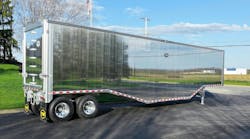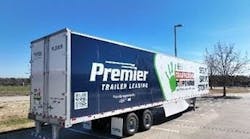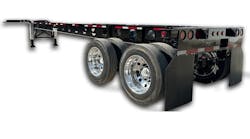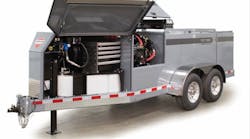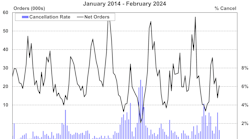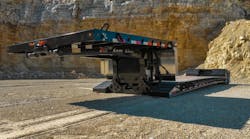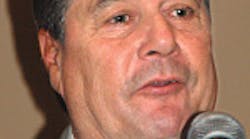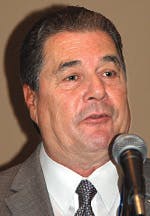THE parts aftermarket is a very complex distribution model, with parts getting to market in myriad ways. And it will get even more complicated in the next five to seven years.
That’s one of the key takeaways from “CV Aftermarket: Current Environment and Future Expectations,” presented by HDA Truck Pride president/CEO Don Reimondo at the FTR Transportation Conference held September 10-11 in Indianapolis.
“It provides multiple options for the end user,” he said. “They will benefit in this equation. That’s good. It has evolved over the past 70 years. The changes have been more evolutionary. They have not been revolutionary—yet. When we talk about the folks at Amazon or eBay, that would be revolutionary. It would have a profound impact on the brick-and-mortar businesses on the distribution side.”
Reimondo said distribution and superior service are critical to success.
“We can never take our eyes off ‘the guy that throws the box away’—the guy that’s turning the wrench,” he said. “That’s really our target.”
He listed and analyzed the market drivers:
• Downtime. “Parts and service availability is critical. We can manage downtime better than anybody. We’re customer service-oriented, flexible guys. It’s about preferential treatment and service and getting more and more guys on preventative maintenance schedules.”
• Regulations. “The government really helps us. They always do. Whether its reduced stopping distance, Hours of Service or CSA, those things always bring business.”
• Shifting delivery methodology. “We’re getting our folks to look into the medium-duty side of the equation. There’s growing medium-duty demand. It kind of ran unnoticed for years, and the reality is that those folks are coming in with a vengeance, and it will change the distribution model over the next five to seven years.”
• Brands matter. I don’t care whether it’s Haldex or Meritor—brands matter to the end user. We try to be a preferential distribution arm for brands. We try to represent brands in the marketplace.”
Reimondo offered some of the positive trends he sees:
• The vehicle population is growing.
• Freight volumes are good.
• Fleet utilization is increasing.
• Miles driven are up 50% in the last 30 years.
• The average vehicle age has increased.
• Outsourced service will increase by over 5% by 2017.
“It’s a function of who’s going to hang parts on a vehicle,” he said. “We believe that’s the key to success long-term. I don’t care whether that’s a relationship with a fleet or independent parts distributor. The reality is, it’s harder to find mechanics. Nobody wants to turn a wrench. This is a significant opportunity going forward.”
The changing dynamics as he sees them:
• OEMs. “Extended warranties will have a profound impact on what we end up doing on the replacement side of the business. Even though vehicles are getting older, warranties run out. The reality is that the first four or five years are awful tough on the replacement side. It used to be a couple of years. And there’s the length-of-service issue. Engines used to get replaced at 250,000 miles. Now it’s just shy of one million. Vertical integration of those manufacturers is having a profound impact on us, along with the all-makes OES brands. You used to be able to count on the Freightliners and Navistars to sell branded stuff. Today, they have their private-branded products. They’ve had a profound impact on the aftermarket distributor.”
• Dealers. “They’re going outside the nameplate to get parts. They’re going to create their own brands. They haven’t been able to count on their manufacturers, so they’ve gone out and done it themselves. They’ve recognized the value of the independent aftermarket.”
• Non-traditional distribution. “Auto and HD dis-
tribution systems are melding. NAPA owns Traction, the largest independent distributor in Canada. You have folks like O’Reilly, with 4000 locations with a unique CV catalog. More non-vehicle distribution players are entering the market. Word is that Grainger has 20,000 SKUs that are sold to fleets and are dynamically pushed to the fleet level. And goodness knows where Amazon is going.”
• Global impact. “Offshore sourcing hasn’t hit all product segments, but it’s hitting. The numbers are significant. It’s a big piece.”
• Technology. “The complexities of vehicles going forward you’d think would rule out the independent aftermarket and replacement piece of the business. We’re going to have to find a way to stay competitive in technological aspects, whether it’s in diagnostics or working out relationships with ‘right to repair.’ ”
On the telematics side of the equation, he said the following statement—which came out earlier this year from Strategy Analytics ABI Research via JD Powers Associates—should be concerning to anybody that participates in the independent aftermarket:
“Telematics allows direct communication with vehicles, so it can be used to refer motorists to facilities for service and repair. The ability for the OEMs to lead and control the dialogue with the vehicle owner via embedded proprietary systems, remotely diagnose and repair vehicles and suggest maintenance could negatively impact the aftermarket, notably independent shops.”
Said Reimondo, “If it truly does drive business back to the dealer, we could see massive bloodshed on the independent side of the equation.” ♦
